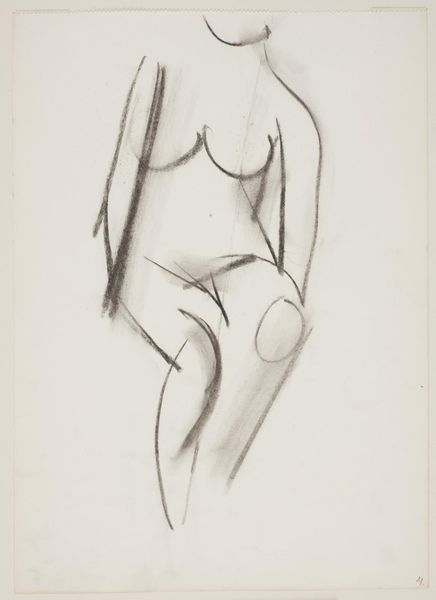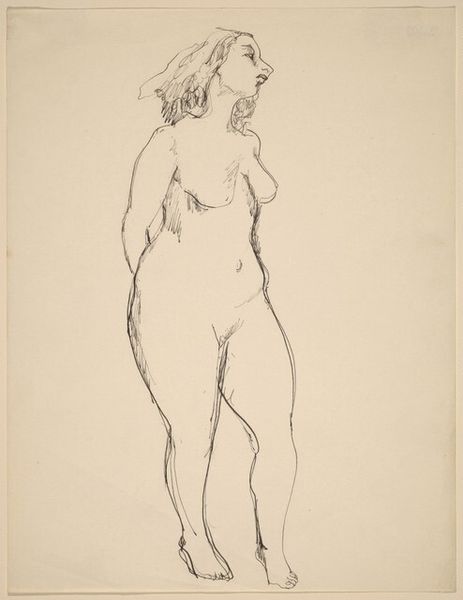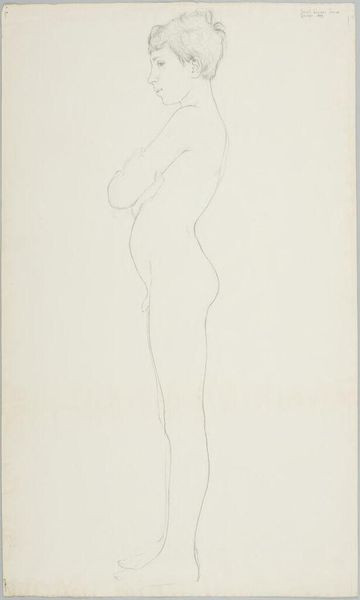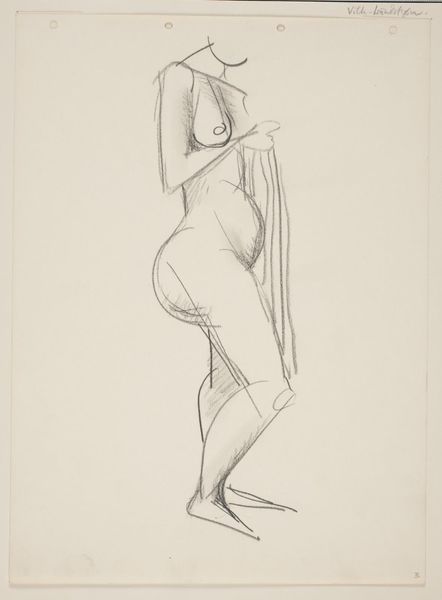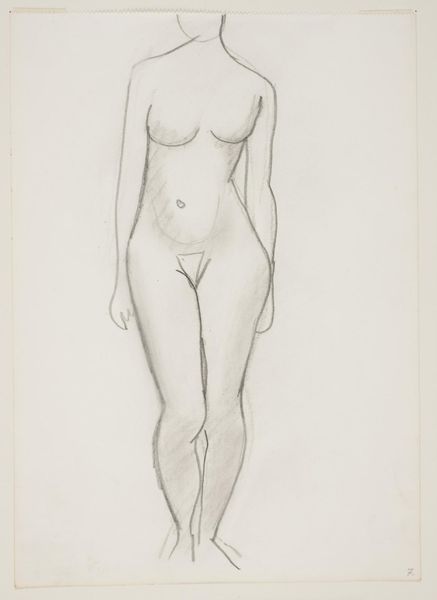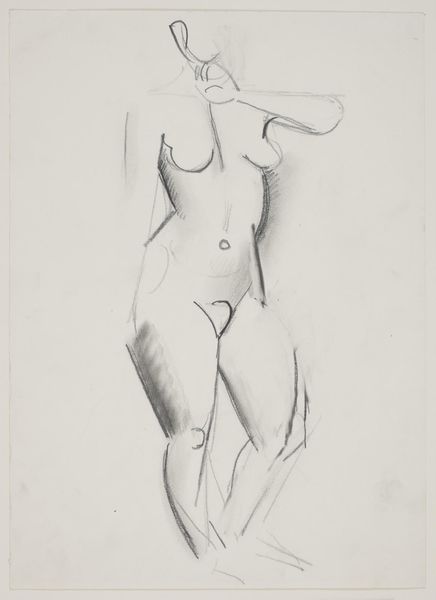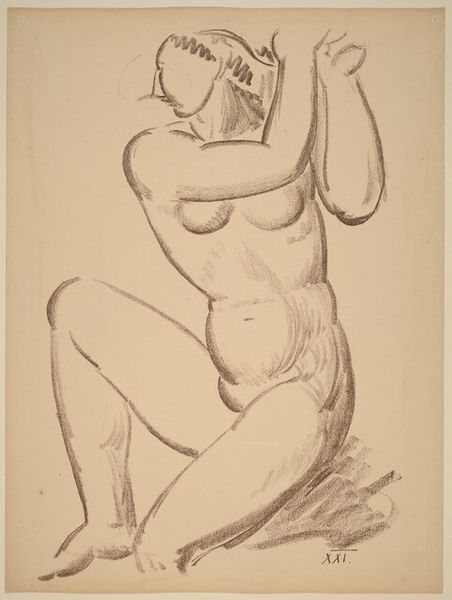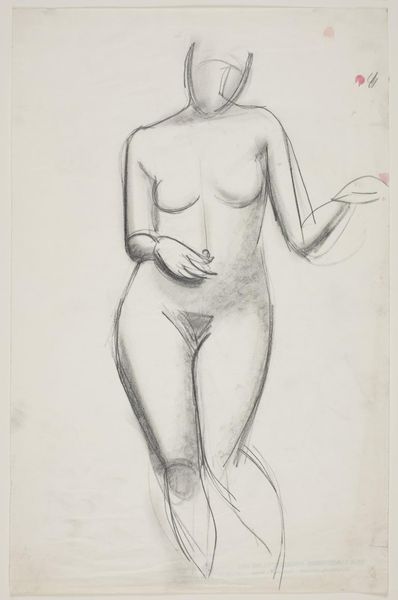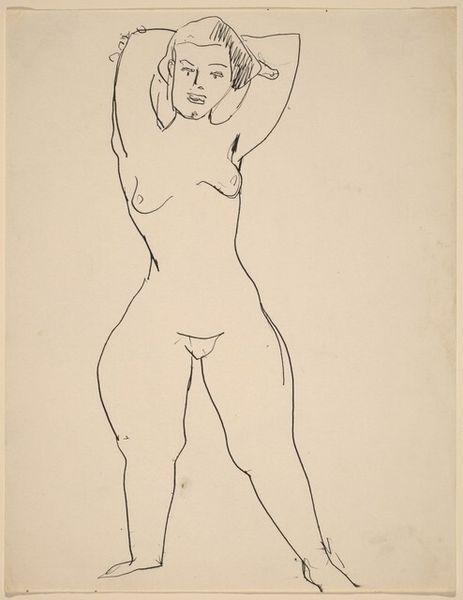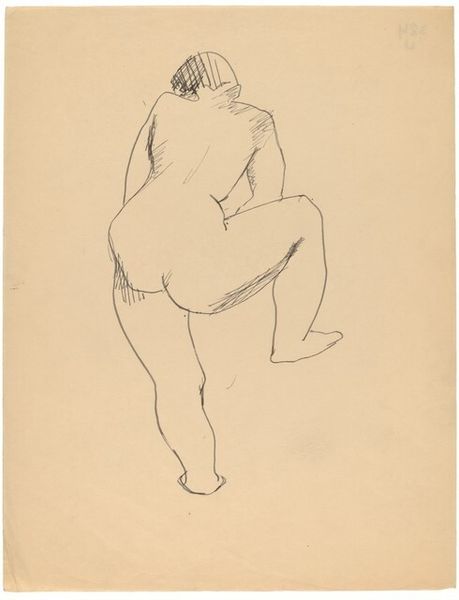
drawing, print, pencil
#
portrait
#
drawing
# print
#
figuration
#
pencil
#
portrait drawing
#
nude
Copyright: National Gallery of Art: CC0 1.0
Curator: Looking at this piece, it's difficult not to immediately focus on the line work, the delicate almost ethereal quality the artist achieves with just pencil. It's as though the figure emerges softly from the page itself. Editor: Exactly. Let’s consider this "Nude" a pencil drawing and print by Augustus John. It exemplifies John’s ability to render the human form with incredible sensitivity, despite existing within the heavily gendered history of the male gaze. How can we reconcile its potential voyeurism? Curator: I'd argue the almost casual nature of the rendering is key. The quick, unstudied quality speaks to John’s mastery of the medium. The lines don’t seem labored over; instead, they possess a spontaneity that mirrors the ephemerality of observation. Think of the choices of material. It's a print, meaning that the process is reproducible for a wider market of consumers. The drawing would have involved pencils—some harder, some softer—on textured paper, enabling both deep, velvety blacks as well as the lightest gradations of tone. It suggests a focus on the figure as object, carefully positioned by the artist. Editor: But we have to ask who this art was marketed to and consumed by. These portrayals can perpetuate unrealistic ideals. Can a gaze like this ever truly be "casual"? Is it not inherently loaded with historical and power dynamics, particularly concerning gender and sexuality? There’s a tension between appreciating its aesthetic quality and its social implications. Where do we see labor depicted here? Does the figure exist outside the artist's labour of depiction, as someone working within John's artistic system and for his artistic end? Curator: Those are compelling points. Let’s also address how John navigates form here. There’s a noticeable absence of harsh lines; instead, we encounter rounded, gentle curves, reinforcing an emphasis on softness and fleshiness through careful shading, revealing attention to detail in the execution of light and shadow—all markers of process. Editor: But consider this through a feminist lens—the soft curves and gentle shading; are these elements not just artistic choices but culturally informed representations that contribute to traditional, often restrictive, ideas about female beauty and idealisation? Curator: Certainly, that lens opens up a valuable layer of critique. The piece prompts us to consider both the artistry and the embedded ideologies. Editor: Yes, and how each viewer responds to that complex interaction today.
Comments
No comments
Be the first to comment and join the conversation on the ultimate creative platform.

